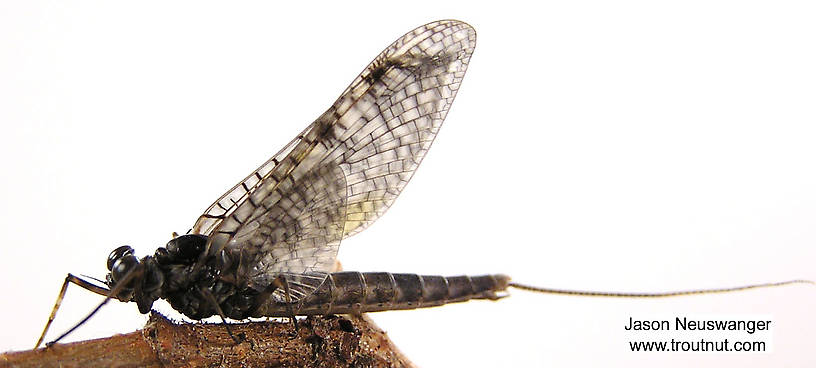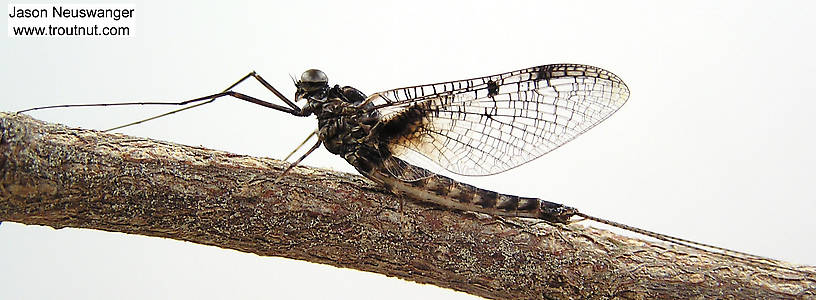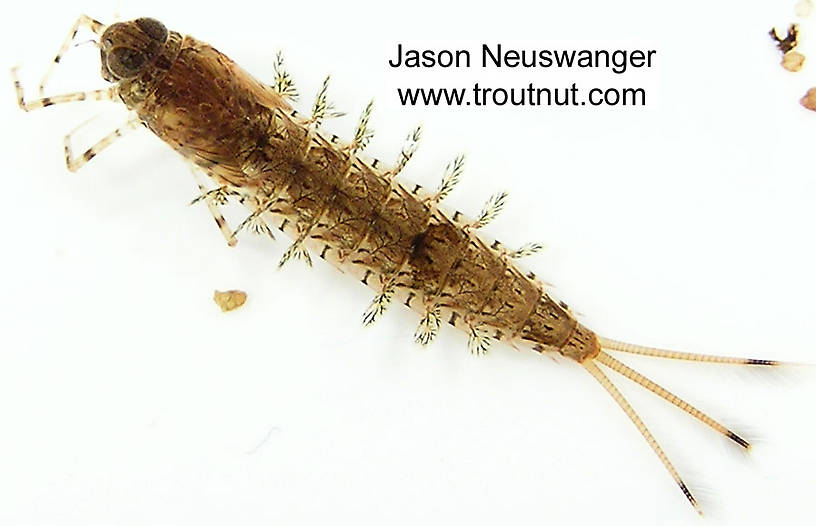
Hex Mayflies
Hexagenia limbata
The famous nocturnal Hex hatch of the Midwest (and a few other lucky locations) stirs to the surface mythically large brown trout that only touch streamers for the rest of the year.
Featured on the forum

Troutnut is a project started in 2003 by salmonid ecologist Jason "Troutnut" Neuswanger to help anglers and
fly tyers unabashedly embrace the entomological side of the sport. Learn more about Troutnut or
support the project for an enhanced experience here.
Great Speckled Olive Duns
This common name refers to only one species. Click its scientific name to learn more.
Mayfly Species Siphloplecton basale
These are often called Great Speckled Olive Duns.
Sadly, the largest mayflies of the early season come in small quantities. Siphloplecton basale matches the impressive size of the Ephemera drakes which follow two months later, but it does not match their numbers. It is common on one of my favorite rivers to see ten to fifteen of these elegant drakes dancing over a riffle in the early Spring. They are difficult to miss in the air, but on the water that quantity cannot get the trout or the angler excited.
There are rumors of fishable Siphloplecton days, but I know none of the details. They might be locally important in places angler-entomologists have yet to visit in the prime months, an unsung local treasure like Baetisca laurentina.
There are rumors of fishable Siphloplecton days, but I know none of the details. They might be locally important in places angler-entomologists have yet to visit in the prime months, an unsung local treasure like Baetisca laurentina.

This one hatched on the same April Saturday that I saw the first Hendricksons of the season.

I went to great comical lengths to swipe this spinner from the air with a little aquarium net I carry with me while I'm fishing. Siphloplecton basale spinners fly fast and high over the riffles, and there are never very many of them, so they're difficult to catch.

This nymph has double front tarsal claws and double gills on the first three abdominal segments.
See 6 more specimens...


